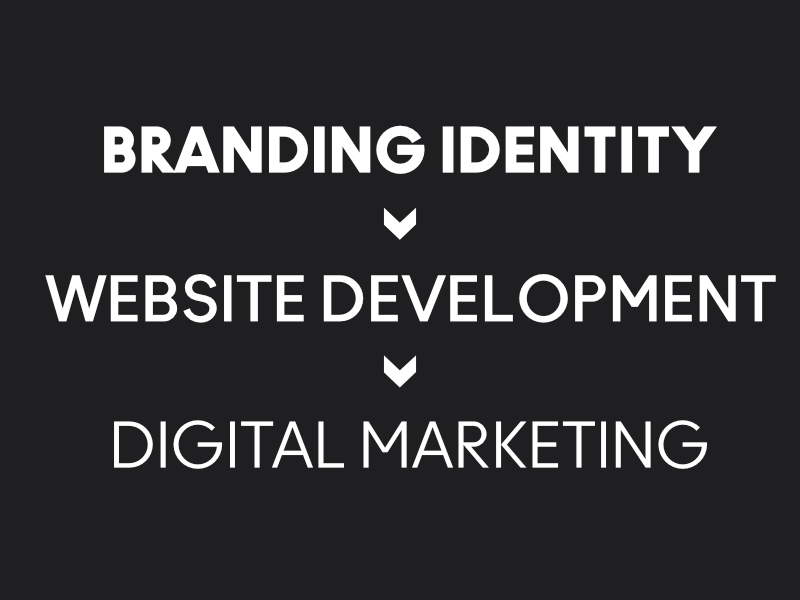A QUICK GUIDE TO SEO
February 23rd, 2025

With SEO, you can optimize your website to intentionally increase your online leads, which ultimately boosts your sales! This is a strategy that every business can utilize to increase their sales. I thought I’d put together a quick guide to help you understand how SEO benefits your business.

WHAT IS SEO?
Having an online presence is crucial for businesses of all sizes. But just having a website isn’t always enough, you need to make sure your potential clients can easily find you online when they want your product/service.
SEO stands for Search Engine Optimization. SEO is all about optimizing your website to rank higher on search engine results pages. The higher your site ranks, the more visible it becomes to potential customers. SEO involves a mix of strategies and techniques, including keyword research, content optimization, and improving your site’s architecture for easy user experience. These efforts work together to make your website more appealing to search engines which in turn drives more traffic and customers to your website.
GET MORE LEADS WITH SEO
One of the best things about SEO is its ability to boost organic traffic (the number of visitors who come to a website through unpaid search results). Unlike paid advertising, organic traffic is free and attracts users who are actively searching for information, products, or services specifically related to your business. By optimizing your website for relevant keywords, you can draw in a more targeted audience. This means that the visitors coming to your site are already interested in what you have to offer, making them more likely to convert into leads!
CONVERTING YOUR LEADS TO SALES
However, generating leads is just the beginning; the real goal is to turn these leads into paying customers. SEO plays a crucial role in this process by enhancing user experience and building trust. A well-optimized website loads quickly, is easy to navigate, and offers valuable content. These factors all contribute to a positive user experience. When visitors find your site useful and trustworthy, they’re more inclined to make a purchase or reach out for your services.
TARGETING KEYWORDS
Keyword targeting is a key part of SEO. It means finding the words and phrases that people use when they search for things, like what you offer on Google. For example, if someone wants to order a pizza, they might type “pizza places near me” into Google. Once you know these keywords for your own business (by doing keyword research), you should use them naturally in your website’s content to draw in targeted traffic.
Here are the steps to do it effectively:
- Research: Find the right keywords by looking at what people search for when they want to find your specific product/service.
- Analyze: See how many other websites use these keywords and how often they’re searched. These sites will be your competition!
- Implement: Use these keywords naturally in your content to get more online visitors to your website.
- Monitor: Keep an eye on how well your keywords are working, and make changes if needed.
- Keep Building: Continue doing research and expanding your website to target more and more keywords. Make adjustments to your site along the way to ensure each keyword you’re targeting is ranking. Focus on keywords that are ranking well, because those will be the ones that make the most sales for your business!
WHAT IS LOCAL SEO?
Local SEO makes sure your business shows up when people search for local products or services online. This is super important for businesses like restaurants, shops, and service providers who rely on local customers. Local SEO includes things like: making sure your Google My Business listing is optimized, getting mentioned in local directories, and getting good reviews. When you optimize for local SEO, your business pops up in local search results, connecting you with the right audience and boosting your sales!
BRANDING, YOUR WEBSITE, AND SEO MARKETING
SEO works best when it’s part of a broader marketing strategy that includes branding and website design. Your brand’s identity should shine through in every aspect of your website, from its design, content and overall user experience. Consistency in branding builds trust and recognition, which amplifies the impact of your SEO efforts.
Consistent Branding: Make sure your brand’s voice and visuals are consistent across all platforms, creating a cohesive and memorable experience for your audience.
User Experience: Design your website with the user in mind, focusing on easy navigation and valuable content that resonates with your brand’s message.
Content Marketing: Use SEO to drive traffic to high-quality content that has the power to convert visitors into paying customers.
LENGTH OF SEO CAMPAIGNS
SEO isn’t a quick fix—it’s a long-term strategy. It usually takes a few months before you start seeing significant results because search engines need time to notice and index the changes you’ve made to your site. Typically, you can expect noticeable improvements within 3 to 6 months, but it’s important to keep optimizing to maintain and enhance your rankings.
Here’s a rough timeline:
- Initial Research and Setup: This takes about a month to understand your goals and set up your SEO strategy.
- On-Page and Off-Page Optimization: This phase, where you tweak your website and build links, can take 2 to 4 months to show results.
- Monitoring and Adjustments: SEO is an ongoing process. After the initial setup, you’ll continue monitoring and making adjustments for at least 6 months or more to keep improving.
SO, DO YOU NEED SEO?
Investing in SEO can make a significant impact on your business. It helps drive targeted traffic, generate leads, and turn those leads into sales. Remember, SEO is a journey that requires consistent effort, but the rewards are well worth it.
Learning how to do SEO for your own business is obviously extremely beneficial and a great way to save money. But if you don’t have the time, I offer SEO services for businesses! Reach out to me today for a free consultation if you think your business would benefit from SEO marketing.
GET IN TOUCH
Learn more about my services or get a quote for a project. Just fill out the form below and I’ll be in contact asap!









